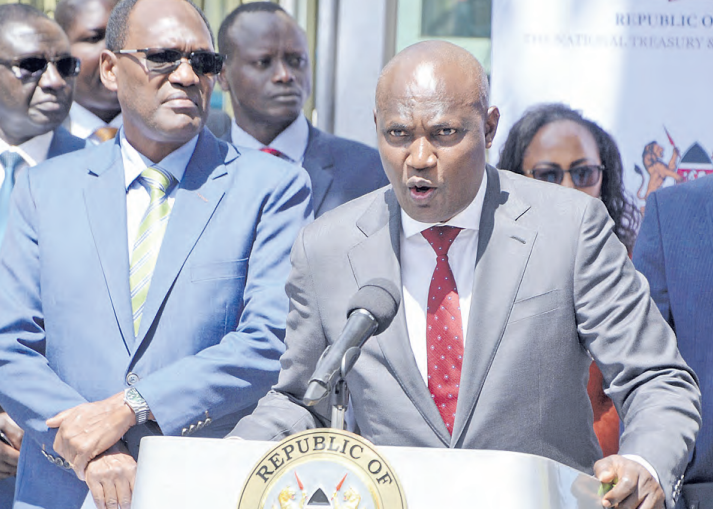
The current low revenue collection is expected to continue
in the 2025- 26 financial year with the National Assembly’s budget team
projecting a Sh200 billion drop.
The budget options
for 2025/26 and Medium term report released by Parliamentary Budget Office on
Thursday forecasts the country to collect Sh3.3 trillion, Sh200 billion lower
than the National Treasury’s estimates of Sh3.5 trillion.
The Parliamentary
Budget Office (PBO) attributes this to low economic activities in the country
that have already hampered revenue collection fin the current financial year.
“This is partly explained by the fact that the actual
revenue collection for the first half of 2024-25 is below target by over Sh70
billion meaning the total revenue projected for 2024-25 is likely to be off
target,’’ the PBO report says in part.
“Since 2024/25
revenue target is the basis for the National Treasury projections for 2025-26,
the PBO projects that the BROP target is unlikely to be achieved.”
While the revenue will drop, expenditure is expected to
rise, putting the exchequer in a more precarious position.
PBO says that the total expenditure and net lending will
increase from the current Sh3.9 trillion to the Sh4.4 trillion in the financial
year starting July 1.
When compared to the Budget Review and Outlook Paper (BROP)
projections, the total expenditure only deviates from the National Treasury
projections by Sh50 billion with a higher projection for recurrent expenditure
and a lower projection for development expenditure.
Based on the projected revenues and expenditures, the fiscal
deficit is projected to increase to 5.7 per cent of GDP in 2025-26 compared to
4.3 per cent of GDP this year.
“This is higher than
the BROP projection due to the lower revenue projections by the PBO.”
The budget arm of the Parliament has cautioned that low
revenue collection and high expenditure expectation is likely to thrust the
country into more debt even as President William Ruto’s regime professes austerity
measures.
The country’s debt is currently at 71 per cent of GDP, way
lower than anticipated 55 per cent.
The National Treasury has however insisted that its fiscal
plan is well aligned and hopes to increase revenue collection going forward as
well as reducing the debt burden.
National Treasury CS John Mbadi on Thursday told journalists
that the government has deliberate on efforts to produce while paying debt.












![[PHOTOS] Ruto's final day of Mt Kenya tour](/_next/image?url=https%3A%2F%2Fcdn.radioafrica.digital%2Fimage%2F2025%2F04%2Fe32b06c0-d517-4e69-8218-7daf220dc652.jpeg&w=3840&q=75)
